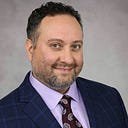Brain Stimulation Therapies and Their Positive Effects on Mental Health
Mental illness is most commonly treated with medication and psychological treatments. But when these are not effective, brain stimulation may be brought in as a complementary therapy. It involves activating or inhibiting the brain with magnets or electricity.
There are several types of brain stimulation that can be used to treat mental illness. This article will provide an overview of the forms of therapy that are available.
Electroconvulsive Therapy (ECT)
ECT is the most used type of brain stimulation therapy. It is used to treat severe forms of depression as well as bipolar disorder and schizophrenia. It can be effective on patients in a catatonic state as well as those that are malnourished due to severe depression.
No one is sure exactly how ECT works, but it is believed to change chemical aspects in the brain to improve mental illness. A patient must be sedated before ECT is administered. Once under, electrodes are placed at precise locations on the head. The electrodes allow an electric current to pass through the brain causing a brief seizure. Because the patient is sedated, they do not feel pain.
The therapy may yield results in the first week for some patients. It can also reduce the chance of relapse when combined with follow-up treatments that include medication and talk therapy.
Vagus Nerve Simulation
The vagus nerve runs from the brainstem through the neck down to each side of the chest and abdomen. It carries messages from the brain to the body’s major organs and plays an important role in sleep, mood, and other functions.
Vagus Nerve Stimulation involves surgically implanting a device called a pulse generator in the upper left side of the chest. It sends 30-second electrical pulses to the vagus nerve, typically about every five minutes. The vagus nerve responds by sending signals to the brain.
The pulse generator works continuously and is powered by a battery that lasts about 10 years. It can be temporarily deactivated by placing a magnet over the area of the chest where it is implanted.
Vagus nerve stimulation was originally developed to treat epilepsy, but it was found to alter levels of neurotransmitters in the brain to improve mood. It is therefore sometimes used to treat severe depression.
Repetitive Transcranial Magnetic Stimulation (rTMS)
rTMS involves using a magnet to activate the brain. Unlike ECT, it can target a specific part of the brain. It has been shown to be effective in treating depression, psychosis, anxiety, and other disorders.
An rTMS session lasts for 30 to 60 minutes and does not require anesthesia. The procedure involves an electromagnetic coil being held against the forehead near the brain. The coil emits short, electromagnetic pulses which pass through the skull and stimulate the nerve cells in the region of the brain being targeted.
Because the stimulation does not reach more than 2 inches into the brain, providers can move it around to treat regions of the brain where it is needed most. Opinions vary regarding which site is best.
Magnetic Seizure Therapy (MST)
MST features aspects of ECT and rTMS. Like rTMS, it uses magnetic pulses instead of electricity to stimulate specific parts of the brain. And like ECT, it aims to produce seizures. Because it produces seizures, patients must be anesthetized during treatment.
Although MST is still in the early stages of testing, it has been shown to be effective in treating major depression and bipolar disorder.
Deep Brain Stimulation (DBS)
DBS was originally developed to reduce tremors, stiffness, and uncontrollable movements in patients with Parkinson’s Disease. However, it has also been found to treat depression and OCD. It is an extreme therapy that requires brain surgery and is only used to treat depression on an experimental basis.
Patients are awake during therapy, but they receive local anesthesia, so they don’t feel any pain. During the surgery, two holes are drilled in the head. The surgeon then sends a slender tube into the brain to place electrodes on specific areas of the brain.
The first area that’s targeted is the subgenual cingulate cortex which has known to be overactive in depression and mood disorders. Electrodes are also placed in other parts of the brain that may vary depending on the illness being treated. For example, when dealing with OCD, they are placed in the ventral capsule, an area of the brain believed to be associated with the disorder.
The electrodes are attached to wires that run inside the body from the head to the chest where a pair of battery-operated generators are implanted. Electrical pulses are continually delivered through the wires. It is believed that the pulses help to reset the part of the brain that is malfunctioning.
Side Effects
It’s important to note that each of these therapies is associated with a variety of symptoms, which may include:
● Disorientation
● Bleeding in the brain
● Stroke
● Movement disorders
● Difficulty sleeping
● Mood changes
● Lightheadedness
It’s important to talk to your medical professional about the risks of any treatment before moving forward.
Conclusion
Brain stimulation therapies are an extreme way to treat mental illness, but they are proving to be effective in severe cases. While they are typically used as a last resort, it is fortunate to know that the alternatives exist. If you feel one of these therapies may be a consideration for you, be sure to consult with your medical professional to discuss the best treatment options for your condition.
